Review: 1965 Jaguar E-Type

The sun breaks through trees and plays off the long bonnet. As I loaf along the arrow-straight road, I absorb the soundtrack: the baritone exhaust note of the big-bore, long-stroke, inline-six. Ahead, I spot that sign that makes every true driver shut down the internal dialog in their brain and focus on the here and now: Winding Road. Amazing what a sign can do to lift one’s spirit. In a Jaguar E-Type, elevation quickly becomes ecstasy.
The road dives down and to the left, as I blip the throttle and snap the solid shifter down from fourth into third. As the revs rise and fall the big pipe organ that droned a single note is joined by a mechanical symphony. There’s a distinctive whine from the intake, produced by three trumpeted two-inch Skinner’s Union HD8 carburetors. The entire cylinder head adds a delicious rustle: chain-driven dual overhead cams spinning furiously at the insistence of my right foot. Underlying it all: the booming low notes of the exhaust, throbbing as if The Ox himself was laying down the bass track.
The car handles corners with aplomb; I could take each one at twice the speed without so much as a squeak of complaint from the tires. But the realization that I’m driving a forty-four year old car holds me back. This car was built in a time when going fast and looking good were the priorities, not saving the planet or protecting the occupant. The E-Type’s seat rises as high as my shoulder blades. In a bad shunt, the seat belts would only serve to secure my body while the windscreen decapitated me, in the blink of an eye. No air bags or handling nanny here; the only safety systems on board are my grey matter and the skill of my hands and feet. Stirling Moss will have to wait. Fortunately, even at velocities well within the posted limits, the E-Type provides endless satisfaction. The driving experience is worth risks Ralph Nader could never even imagine.
The E-type Jaguar arrived on the automotive scene in 1961, like a cruise missile vectoring into a stone-age village. It brought with it technologies extracted from the rarified world of endurance racing, bringing world-beating performance to the street for a shockingly reasonable price.
The E-Type outperformed the contemporary Ferrari 410 SuperAmerica ($16,800) or a 250 GT Berlinetta SWB ($11,800), for less than half the price. When new, the Jaguar sold for $5,595. Il Commendatore himself labelled the E-type “The most beautiful car ever made” . . . while swiftly copying it in the form of the 250 GTO, and again with the 275&365 GTB/4s. The E-Type also prompted redesigns of other sports cars, notably here in America, Chevrolet’s Corvette; look at the radical difference between the C1 & C2.
The E-type is a race car adapted for the street, not a purpose-built race car like it’s predecessors, the C-/D-type Jaguars. The E-type appeared in a few races, with two of the first stock units topping the podium in their initial outing at Oulton Park (in their native England). But, in the end, E-Types were not that successful at the big races of the era: Le Mans, Sebring, the Nürburgring. The E-Type always finished near but never at the top of the podium.
Still, the E-Type offered truly innovative-for-the-day technology, some of which has become standard equipment across the automotive spectrum: power-assisted disc brakes, fully-independent rear suspension, unibody construction, rack and pinion steering. In the early ’60s, the E-Type was leading-edge exotica, delivered in the form of reasonably-priced automotive erotica.
Despite its long, low look, the E-Type is deceptively small, especially compared to most other cars on the road. It handles very smoothly thanks to even weight distribution fore and aft; the engine and gearbox sit back well behind the front axle so that weight, with a driver and fuel, is split 50/50. Steering is precise. Oversteer is delivered so smoothly and predictably that in a tight autocross course some steering load can be handled by the loud pedal. Diesel-like torque is available at any RPM, making 50-70+ acceleration and passing on two-lane roads something to seek out and savor.
My E-Type’s original owner purchased the car in Albuquerque, NM. About 15 years ago, my father restored it as his “retirement project” and I bought it from him in 2003 to save his marriage. (True story.) After investing countless hours behind the wheel (and under the bonnet), I can report that the Jaguar E-Type’s not the fastest classic car money can buy. Nor is it the best around a skidpad. But none of that really matters with an E-type Jaguar. The car provides masses of dynamic feedback and makes great noises. Phallic issues aside, it’s drop-dead gorgeous. When you’re heading down a twisting two lane road, when there’s nothing but zen ahead, what else do you need?

Second Generation Car Guy living in the Sasquatch-filled wooded hills of the Pacific Northwest with an old E-type Jaguar and a lawnmower that run on gasoline. Everything else I drive runs on home-brew BioDiesel.
More by Chuck Goolsbee
Latest Car Reviews
Read moreLatest Product Reviews
Read moreRecent Comments
- Redapple2 Telluride over Acadian (sic-tip cap-canada). 1 better car. 2 60 % us/can content vs 39 THIRTY NINE for an "American" car. 3 no UAW labor. Smart people drive Tellurides. Not so smart for the GMC. Dont support the Evil GM Vampire.!
- Theflyersfan My dad had a 1998 C280 that was rock solid reliable until around 80,000 miles and then it wasn't. Corey might develop a slight right eyelid twitch right about now, but it started with a sunroof that leaked. And the water likely damaged some electric components because soon after the leaks developed, the sunroof stopped working. And then the electrical gremlins took hold. Displays that flickered at times, lights that sometimes decided illumination was for wimps so stayed home, and then the single wiper issue. That thing decided to eat motors. He loved that car but knew when to fold the hand. So he bought a lightly used, off lease E-class. Had that for less than two years before he was ready to leave it in South Philly, keys in the ignition, doors unlocked, and a "Take it please" sign on the windshield. He won't touch another Benz now.
- Detlump A lot of people buy SUVs because they're easier to get in and out of. After decades of longer, lower, wider it was refreshing to have easier ingress/egress offered by an SUV.Ironically, the ease of getting in and out of my Highlander is very similar to my 56 Cadillac.
- Redapple2 LP Michigan. Long straights. A long sweeper. 2 chicanes. 4 hard turns. Lenghts of each element are different but similar to LeMans.
- Teddyc73 Doesn't matter, out of control Democrats will still do everything they can to force us to drive them.



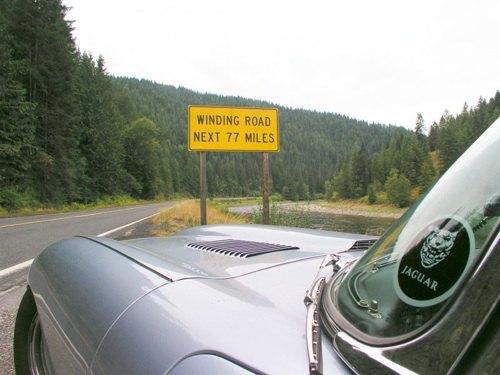



















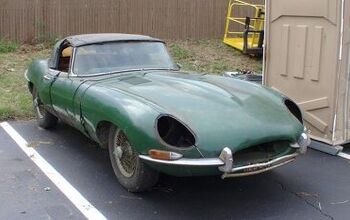
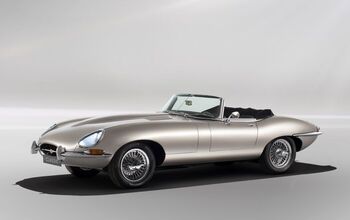

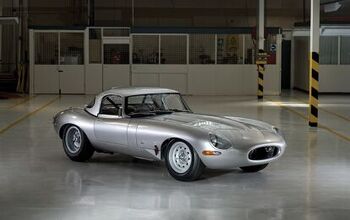









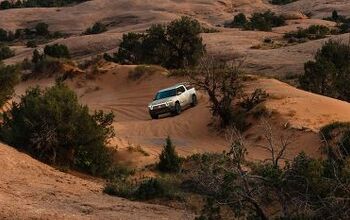

Comments
Join the conversation
Sled, I have two knock-offs from my dad's 1970 E-Type as paper weights on my desk. Unfortunately it is all that I have of her as dad sold her for an Alfa 2000 GTV. Frankly, a real Italian mistress would have been more dependable and less expensive. Neither, though, would have had the enduring beauty of an E-Type.
I bought a 68 ots about 5 years back and the previous owner had put a motolita steering wheel on it and that was the first thing i replaced with the restores original wheel.